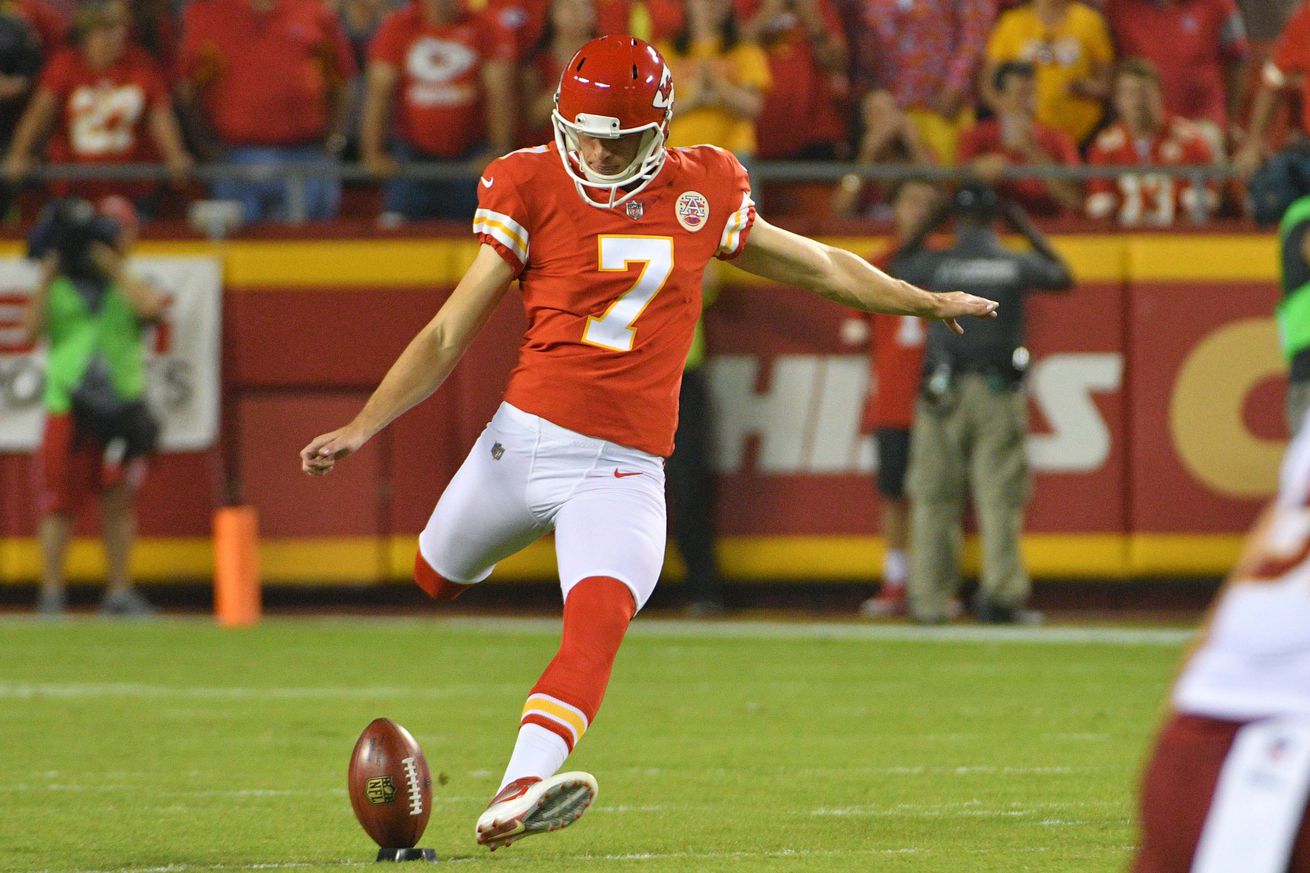The NFL’s new kickoff rules, explained

Kickoffs are safer now, but may also be more exciting too.
Kickoffs will look a little different in 2018 after the NFL passed a new set of rules that aims to make the play safer. A bonus is it may make kickoff returns more exciting, too.
The overhaul comes in several facets, as tweeted by the league a week before the owner meeting that officially approved the changes:
To be adopted, a new rule/revision must have the support of 75% of owners (24 yes votes out of 32 clubs). Here’s a look at the proposed changes compared to the current kickoff rule. pic.twitter.com/mvuBVfd5Du
— NFL Football Operations (@NFLFootballOps) May 16, 2018
The league announced the changes Tuesday and said it would revisit them after the 2018 season:
Following today’s vote at the @NFL Spring League Meetings, here’s everything you need to know about the new kickoff rules for the upcoming 2018 season. The rule will be reevaluated next offseason. pic.twitter.com/YubLyMBR4g
— NFL Football Operations (@NFLFootballOps) May 22, 2018
The main goal of the rule changes is to limit the amount of full speed collisions that have made kickoffs the most dangerous play in football.
“If you don’t make changes to make it safer, we’re going to do away with it,” Packers president Mark Murphy told Sports Illustrated in March. “It’s that serious. It’s by far the most dangerous play in the game.”
The changes should significantly decrease the likelihood of an injury.
What’s different about the kickoffs now?
No running starts
Under the old rules, players could start at the 30-yard line and get a running start, so long as they didn’t cross the 35-yard line before the kick. The new rule will force players to wait at the 34-yard line.
The goal is to slow down the coverage unit a bit and reduce the speed of collisions with blockers.
Most of the return team is confined to a “setup zone”
Eight of the return team’s 11 players will now begin a kickoff in a 15-yard zone near midfield. Previously, blockers were allowed to start anywhere, so long as they were behind their “restraining line”, which was 10 yards from the kicking team.
This will force blockers to run down the field with the coverage team, making blocking similar to that of a punt.
No wedge blocks
With eight players in the “setup zone”, that leaves two blockers and a returner near the goal line. Those two players cannot team up to both block the same player. Wedges have been gradually phased out of the NFL, with the rule dwindling down to just two-player wedges in 2009. They have now been removed altogether.
No blocking in the first 15 yards
This new rule will force the return team blockers to wait until the coverage unit has crossed midfield before engaging. This solves two things:
- The biggest danger of a huge collision would come if a player on the coverage team manages to get through the first wave of the return team unblocked. That’d be more likely if they were able to make a blocker whiff right away. Imagine it like a gunner on a punt team who gets a free release. By forcing blockers to wait, they’ll have a better chance of at least slowing the coverage team down.
- It takes away what the NFL calls the “jump-set/attack” block. The coverage team can’t be blindsided by blockers when they know exactly where the blocking will begin.
Ultimately, this protects both sides.
No need to kneel
If a ball gets to the end zone and touches the ground, it’s an automatic touchback. There’s no need for a player to pick it up and kneel, or even catch a ball if it’s headed for the end zone and they don’t intend to return it.
This is a small time saver, but the goal is to blow a play dead earlier so that unnecessary collisions don’t happen. Under the previous rules, a player could take their time gathering a ball and kneeling while the coverage team and return team blockers still careened toward each other for no reason.
Why is this rule change better?
The reason kickoffs were the most dangerous play in football is that it essentially boiled down to two teams of players running full speed at each other.
In the case of punt returns, the majority of players on the field begin close to the line of scrimmage. That didn’t make the play any less exciting, but decreased the speed of the collisions on the field.
If anything, punt returns have historically been more exciting than kickoff returns. I’ll let Jon Bois explain:
The impact of the change may take years to figure out.
“I think these changes are probably going to be for the better,” Colts kicker Adam Vinatieri said on The Rich Eisen Show, via Pro Football Talk. “It’s really going to be interesting how special teams coaches try to find a way gain an advantage. Are they going to kick it short and make teams return it or are they going to go ahead and try to kick it deep to get a touchback?”
But with coverage teams given less of a free run down the field, the bonus of a rule that intends to increase player safety is that it may also increase kickoff return touchdowns. That’d make the change a win-win for players and fans, alike.

